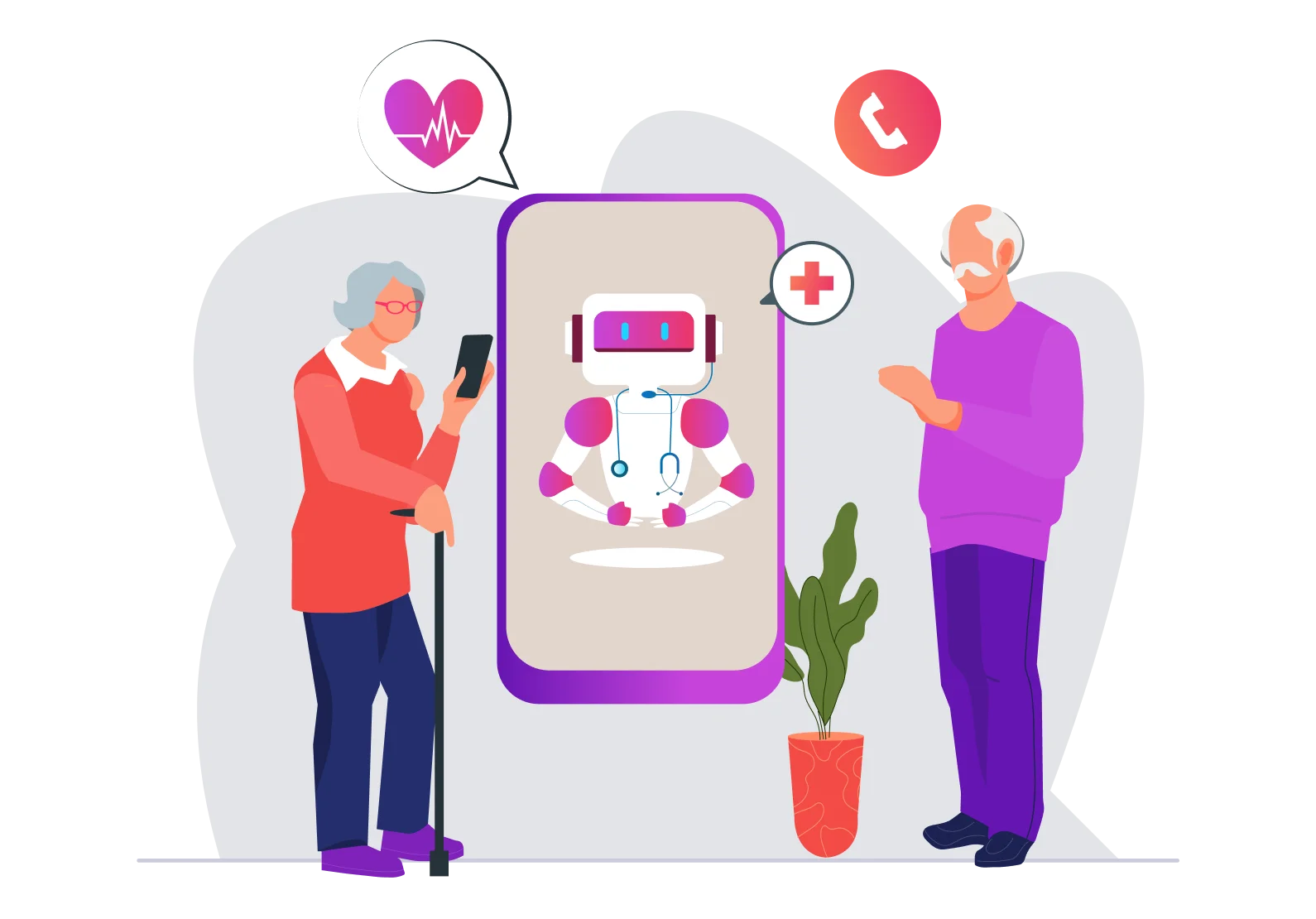
Leveraging AI for Enhanced Health Monitoring in Elderly Care
- Home
- Leveraging AI for Enhanced Health Monitoring in Elderly Care
Introduction
This advanced health platform utilizes artificial intelligence to provide personalized alerts and early disease detection based on residents’ medical and behavioral data. The clinical support tool creates customized treatment and care plans, improving patient care and enhancing staff efficiency.
Problem Statement
Elderly individuals often face various health issues requiring constant monitoring. This constant need for health checks can be overwhelming and stressful for family members and caregivers in elderly care facilities. Consequently, delayed detection of health problems and inadequate personalized care become common, creating a significant burden on both caregivers and residents. Efficient health monitoring is crucial to addressing these challenges.
Solution
The health platform addresses these challenges through several innovative solutions:
1. Automated Health Monitoring
Problem: Continuous health monitoring is essential for elderly residents, but traditional methods using intrusive devices like cameras or wearables can be uncomfortable and inconvenient. Caregivers need a reliable system that minimizes the use of such devices while providing accurate health observations.
Resolution: Implemented non-intrusive automated health monitoring by gathering and analyzing medical and behavioral data, providing real-time health observations without requiring cameras or wearables.
Tools and Technologies Used: The solution leveraged advanced AI algorithms for data analysis and real-time monitoring capabilities integrated within the platform.
2. Personalized Alerts
Problem: Caregivers and family members often struggle with timely detection of potential health issues, leading to delayed interventions and increased risk of complications.
Resolution: Generated personalized alerts for early detection of potential health issues, enabling caregivers to take prompt actions.
Tools and Technologies Used: The alert system was built using AI-driven analysis tools that monitor and detect anomalies in health data, triggering alerts based on predefined health parameters.
3. Comprehensive Care Plan
Problem: Creating and managing personalized care plans for each resident is time-consuming and challenging for caregivers, often leading to generic treatment approaches.
Resolution: Provided tailored treatment and care plans based on individual health needs, utilizing data-driven insights to customize care.
Tools and Technologies Used: Utilized AI for data analysis and machine learning models to develop personalized care plans from collected health data.
4. RPM/RTM Reimbursements
Problem: Elderly care facilities face financial challenges and need to secure reimbursements for health monitoring services to sustain operations.
Resolution: AI-driven observations qualified for Remote Patient Monitoring (RPM) and Remote Therapeutic Monitoring (RTM) reimbursements, providing a financial incentive.
Tools and Technologies Used: Implemented AI-based health monitoring systems compliant with RPM/RTM reimbursement criteria, ensuring financial benefits for facilities.
5. User-Friendly Interface
Problem: Staff and family members often find it difficult to efficiently manage and track residents’ health status due to complex and non-intuitive interfaces.
Resolution: Offered an intuitive and user-friendly interface that simplifies the tracking and management of residents’ health status.
Tools and Technologies Used: The platform was designed with React for the frontend, integrated with Ant Design for UI components, and used React Query and Axios for data fetching, ensuring a seamless user experience.
6. AI-Driven Chat System
Problem: Care facilities, management staff, and patients often require quick access to information and guidance, which can be challenging with traditional communication methods.
Resolution: Implemented an AI-driven chat system where each user is assigned a role. A custom-trained ChatGPT model answers questions and provides data based on the entire company’s data, guiding users effectively.
Tools and Technologies Used: The chat system utilizes a custom-trained ChatGPT model integrated into the platform. User roles and permissions are managed through the platform’s backend, ensuring that the AI provides accurate and relevant information to each user.

Conclusion
By implementing these solutions, the health platform aims to enhance the quality of care for elderly residents, reduce the workload for caregivers, and ensure timely intervention for health issues. The platform’s advanced AI-driven capabilities provide significant benefits to both residents and caregivers, making health monitoring more efficient and effective.
